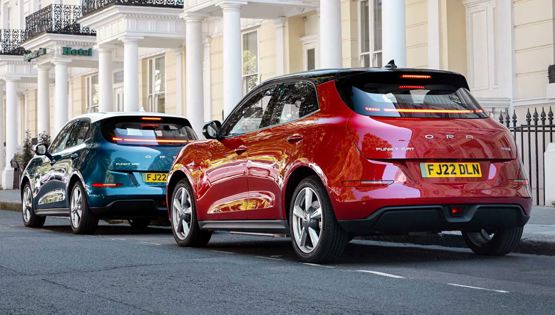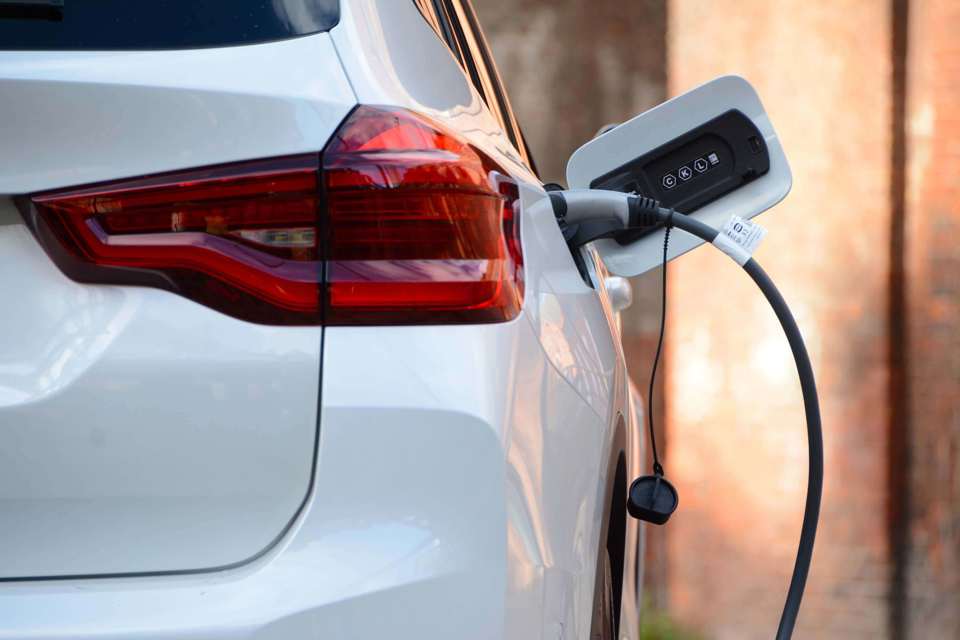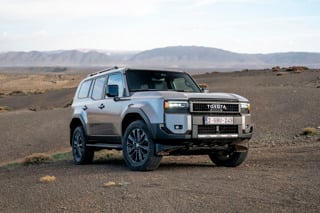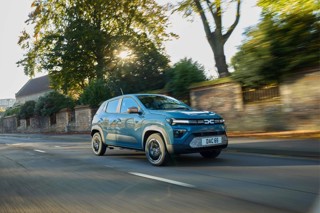The rising price of fuel and the cost of living crisis have been among the biggest drivers behind the move to electric vehicles (EVs) over the past 12 months, according to automotive experts. As incomes have become increasingly squeezed and the climate change agenda has come into sharp focus in the wake of COP 26, the population has been looking for more affordable and greener transport solutions.
At the same time, proposals for a zero-emission vehicle mandate put forward by the UK Government will require a set quota of new models marketed by manufacturers to be EVs, writes Alex Wright.
But, with new EV registrations predicted to rise by more than 74% in 2022, according to DriveElectric, many manufacturers are already ahead of the curve, making new EVs more widely available on the market, while phasing out internal combustion engine (ICE) vehicles. On top of that, car dealerships are investing more heavily in adding EVs to their stock range.
Yet, in recent months, the lower long-term total cost of ownership (TCO) of EV compared with ICE has become one of the biggest enablers of their adoption. As EVs become more mainstream, spurred on by new entrants adding to the competition and disrupting the market, people have also started to trust them more.
This was evidenced as evidenced by a recent EY survey, which found that 49% of customers looking to buy a new car said they would choose an EV. “More recently, issues regarding cost-of-living pressures and the fuel crisis have meant there are economic advantages to adopting an EV,” says Sue Robinson, chief executive of the National Franchised Dealers Association (NFDA).
“It is significantly cheaper to charge your vehicle from the grid than it is to fill a tank a petrol. Further incentives include exemption from congestion charges and paying reduced rates of vehicle road tax.”
The Government’s proposed ban on the sales of new ICE vehicles by 2030 and its commitment to make new cars zero emissions-capable by 2035 have been the main driving forces behind the switch to EVs. Its consultation on plans to develop an EV mandate for new car sales, which began in April, is another step in the right direction, says Robinson.
“It is promising to see Government’s further commitment towards the decarbonsiation of private vehicles,” she says. “Government will continue to play a vital role towards EV adoption in the lead up to the 2030 ban, and it is imperative that there is continued support for both consumers and automotive retailers alike.”
Various Government vehicle and home charger grants and subsidies have also helped to reduce the financial burden of buying an EV. One of the most significant drivers of this is the now discontinued plug-in car grant, which despite successive reductions in value in 2020 and 2021, has incentivised EV take-up.
“As the incentives have been scaled back, growth hasn’t slowed down, highlighting the role the incentives played in kick-starting the adoption of battery electric vehicles (BEVs), but also the fact that they aren’t required for a healthy EV market,” says Gareth Arnould, senior researcher – consultant at ICDP.
“As BEV penetration grows, incentives will have to be scaled back even further, and we will inevitably see a shift from incentivising BEVs to penalising ICE vehicles through taxes, road pricing, etc.”
The introduction of clean air zones across the UK has also sped up EV adoption. Among the most notable ones in recent years are the Ultra Low Emission Zone (ULEZ) in London, with local authorities in Bath, Birmingham and Portsmouth also bringing in their own zones. The installation of electric charging infrastructure has also played a big role, with more sites being rolled out across the country and existing ones being upgraded.
“This has given consumers the confidence to switch to EVs because they know they are more readily available in service stations, supermarkets and retail parks,” says Chris Plumb, senior valuations editor at Cap HPI. “Added to that, the introduction of more ultra-fast chargers by 2030 is helping to accelerate take-up.”
TCO is also lower in the long run. Because EVs have 80% fewer moving parts than ICE vehicles, the running costs over time, such as servicing and tyres, are considerably less. A smoother ride and wider array of technology installed within the vehicle, allied with long warranties on the batteries, are also more appealing to users.
Added to that, dealers have improved their knowledge and selling of EV key features and benefits, helping to drive consumer confidence and, ultimately, demand.
“On top of all this, the employee benefit-in-kind and salary sacrifice car schemes have made EVs more attractive to people,” says Plumb. “At the same time, monthly payments on EVs, whether PCP or PCH, are also becoming affordable.”
EV NEWCOMERS
By now everyone in the UK has heard about Tesla and thousands of motorists now drive one. But it's not been many years since some dealer group leaders were disregarding the US-based brand that "knows about technology but doesn't know how to build cars in volume".
But more new EV brands are coming into the UK, and some arrive very soon.
 Ora UK will launch the Ora Funky Cat First Edition (above) in the UK this autumn. Its 48kWh battery has a claimed range of 193 miles.
Ora UK will launch the Ora Funky Cat First Edition (above) in the UK this autumn. Its 48kWh battery has a claimed range of 193 miles.
The vehicle will come with a five-year unlimited mileage warranty, with the battery covered for eight years or 100,000 miles.
Adopting a hybrid sales approach, Ora has already taken more than 6,000 registrations of interest on its website and plans to establish a network of retailers, including boutique-style showrooms in shopping centres to sell its product, with prices expected to start around the £30,000 mark.
American manufacturer Rivian was due to start deliveries of its R1T pick-up truck (left) in January 2022 before it cuts its production run, citing supply issues. The vehicle has range of 260-400 miles, dependent on the battery and motor. It comes with a battery and drivetrain warranty of eight years or 175,000 miles.
 Rivian also produces the seven-seater SUV R1S, with a battery range of 260 to 320 miles and the same warranty as the R1T. Costing around £48,000 and £58,000 respectively, the vehicles are available for online ordering only.
Rivian also produces the seven-seater SUV R1S, with a battery range of 260 to 320 miles and the same warranty as the R1T. Costing around £48,000 and £58,000 respectively, the vehicles are available for online ordering only.
Fisker plans to launch the Fisker Ocean SUV (right) in the UK in 2023. It includes the zero emission Ocean One (350-plus miles range), Ocean Extreme (350-plus), Ocean Ultra (340 miles) and Ocean Sport (250 miles).
The US-based EV maker is also working on releasing the Fisker PEAR in 2024 and Project Ronin in 2025.
Fisker will sell all models direct to the consumer via its website, which will be delivered by a concierge service. It will also have brand experience centres to showcase its products.
Among the other EV brands set to make their UK debut soon is New York Stock Exchange-listed NIO and Thai-owned Vinfast.



















Login to comment
Comments
No comments have been made yet.